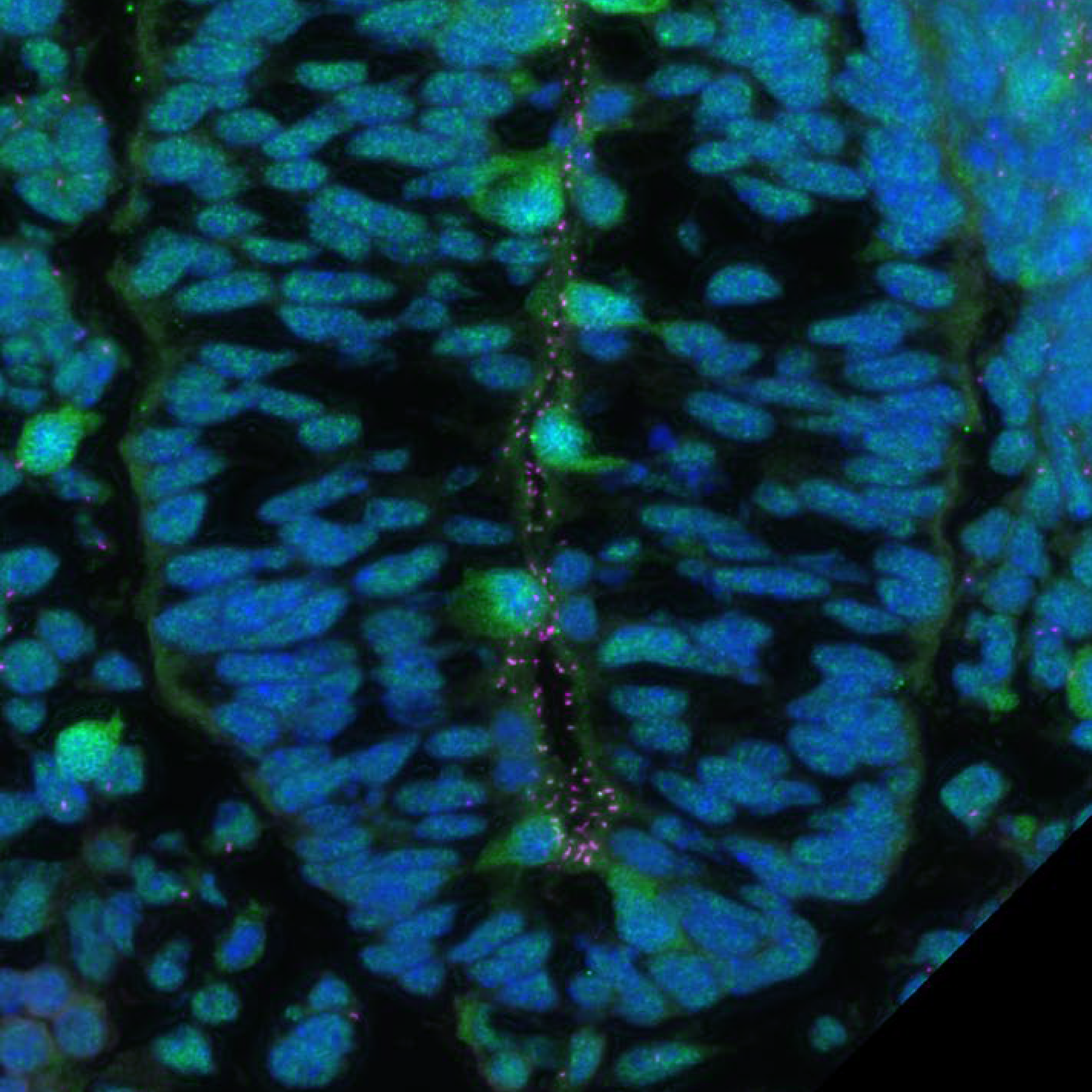
The Primary Cilium
Apart from its roles in development and cancer, Hh is a window into the intricate signaling processes that unfold within the vertebrate primary cilium. The cilium is a tiny antenna-shaped membrane appendage critical to the development and function of nearly all our physiological systems. Mutations in ciliary components affect numerous aspects of human physiology and can profoundly influence cancer progression. However, we know little about how ciliary dysfunction causes such effects. This is mainly because ciliary signaling pathways are often studied with indirect methods that are unable to capture the elaborately choreographed signaling events within this organelle. We are shedding light on this question by merging in vitro biochemical reconstitution assays with novel real-time optical and electrical readouts of ciliary receptor activity.
Hedgehog signaling in the primary cilium. SMOOTHENED (magenta) controls protein kinase A (PKA, green) via an unprecedented mechanism - it directly binds and inactivates PKA by physically blocking the enzyme’s active site (Arveseth et al, PLOS Biol 2021; Happ et al, Nat Struct Mol Biol 2022.). The cilium is marked by SMOOTHENED staining (magenta), and the nucleus is marked by Hoechst staining (blue).
Glossary
-
Glioma associated proteins - a group of transcription factors which regulate expression of Hedgehog target genes. Phosphorylation of GLI proteins by PKA-C leads to their degradation while the activation of SMO receptor helps retain their function.
-
G-protein coupled receptor - a group of eukaryotic membrane receptors consisting of seven transmembrane domains and commonly couple with G proteins to transmit extracellular signals.
-
A group of proteins that interact with G-protein coupled receptors to transmit signals from various extracellular stimuli. They have the ability to bind to and convert GTP (guanosine triphosphate) to GDP (guanosine diphosphate).
-
A signaling pathway involving hedgehog proteins that plays central roles in embryonic development and proper cell differentiation. Abnormalities in this pathway could lead to cancer.
-
Catalytic subunit of protein kinase A - a cAMP-dependent kinase protein that phosphorylates glioma-associated (GLI) transcription factor downstream of the Hedgehog signaling pathway, which leads to the degradation of GLI and suppresses Hedgehog target genes expression.
-
Protein kinase inhibitor motif - a region in mouse Smoothened protein cytosolic tail that directly interacts and inhibits PKA-C activity by acting as a pseudosubstrate.
-
A non-motile membrane protrusion present in many mammalian cell types. It serves as a specialized compartment for many physiological processes, including various signal transduction pathways like Hedgehog.
-
Smoothened - a class F G-protein coupled receptor that is central in the Hedgehog signaling pathway. A noncanonical GPCR, SMO directly binds to its effector protein PKA-C via a pseudosubstrate motif in its cytosolic tail, leading to the activation of Hedgehog target genes downstream.

Our Research Interests
-

Hedgehog Signal Transduction
-

The Primary Cilium
-

New Roles for Lipids and Kinases in Signal Transduction



